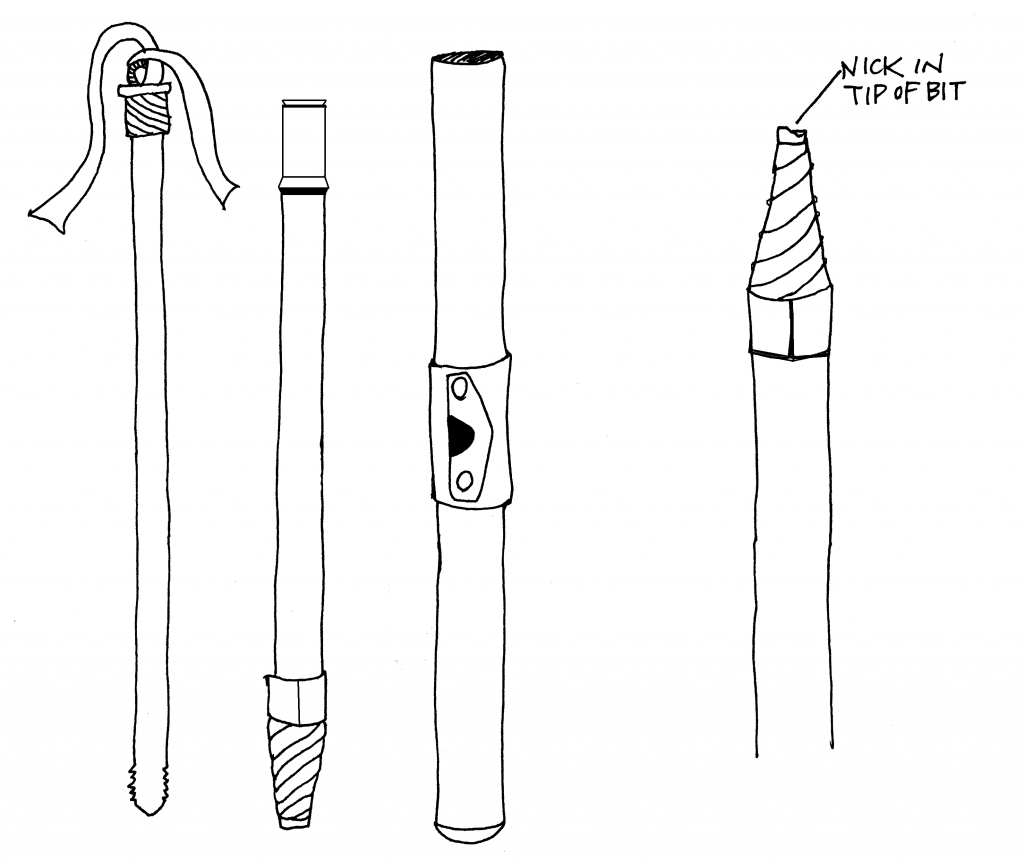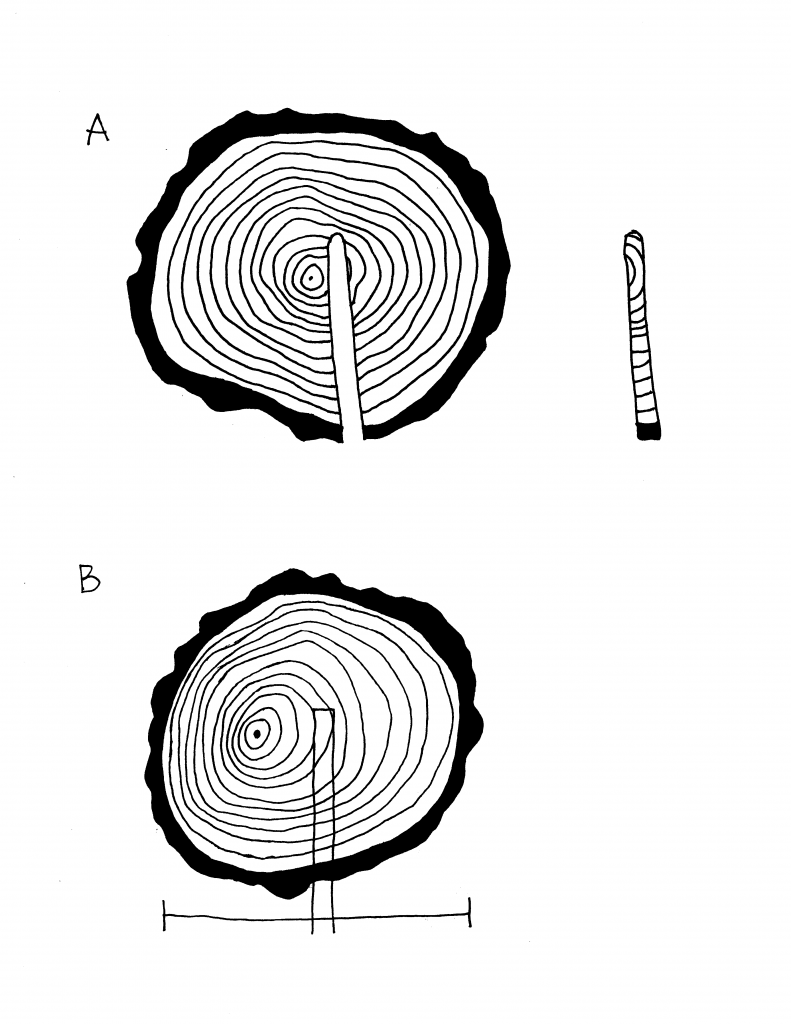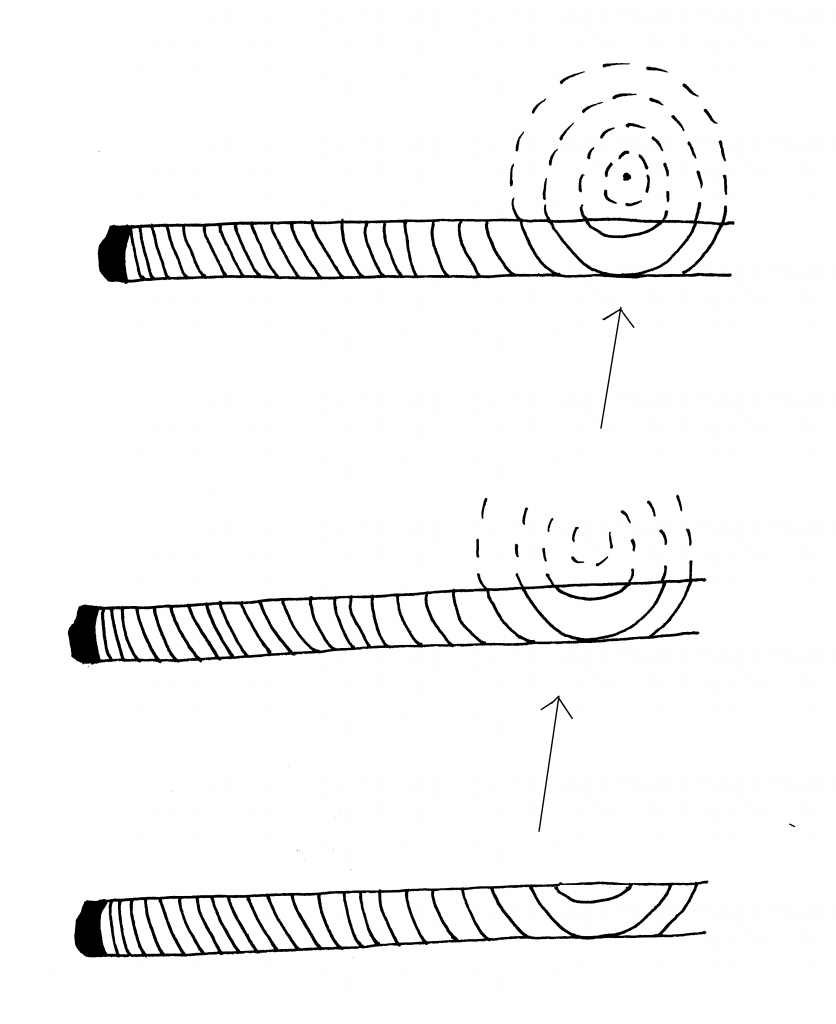18 4.6 Field Techniques for Increment Boring
Here are some tips and instructions for getting clean, usable core samples.
In the office:
1. Inspect your borer bit! Make sure the bit is sharp and free of nicks. A jagged bit edge will result in a torn up core sample. It is extremely important to keep the bit edge clean and protected to get a smooth core sample that you can read easily (Figure 4.9).

In the field:
1. Determine DBH. Note – the core sample does not have to be taken from the uphill side of the tree, but it does have to be taken at DBH. If you are standing on a slope, it is best to bore the tree on the side slope to diminish the effects of the tree’s off-center pith.
2. Choose a spot on the trunk free of knots or bulges.
3. Put the extractor in a safe place while you are boring. Never put it in the ground! Abrasion of the extractor teeth by minerals and rock particles in the soil will dull them, making them unable to “grab” the core sample when it is time to extract the core. It is also too easy to lose or step on the extractor when it is under your feet. Some people stick the extractor into the bark of thick-barked trees, but most manufacturers discourage this as well. A nice place for it is in the pencil slot of your cruiser’s vest. It is also a good idea to wrap brightly colored flagging on the end of the extractor to make it more visible. This is particularly important when working in heavy brush.
4. Getting the bit started is often the most difficult part. You will be able to tell when the bit gets through the bark, “catches” the wood and begins to wind its way to the center. Lubricating the bit with beeswax or WD40 can make that initial catch easier to accomplish.
5. Estimate where you think the center of the tree is and bore two or three inches past that point. This accomplishes a couple of things. a) It is easy to misjudge how far to bore. Adding a few inches reduces the chance that one will come up short in trying to reach the pith.

b) Most trees are not perfectly round, nor is the pith always in the geometric center of a tree. A tree growing on a slope or where there are strong winds, will likely have an off-center pith. Boring past the pith will result in a better chance of hitting the center (Figure 4.10).
c) Generally, it is easier to tell where the center of the tree is when you can see several rings past the pith. The rings on the core sample will start curving a little when you get close to the center; they then curve the opposite direction once you have passed the pith. Seeing the curves in both directions can help pinpoint the center.
6. After inserting the extractor into the borer, turn the handle in a reverse direction crisply to break the wood and allow the core to be extracted. (If the extractor is inserted on top of the core sample, make 1.5 reverse turns; if the extractor is inserted below the core sample, make two full reverse turns.)
7. It may be difficult to pull the extractor out. Use your foot on the tree for leverage or use two hands, but never twist the extractor! This will not help get it out, and will result in a broken extractor. Wear gloves to protect your hands from cuts as the extractor comes out of the tree.
8. Remember that a growth ring representing one year’s growth consists of both the light colored earlywood (laid down in the spring) and the dark colored latewood (laid down in the summer). It is the contrast of the previous year’s latewood to the current year’s earlywood that allows the rings to be counted. Many people train their eye to simply count the dark latewood bands in each ring..
9. A hand lens or magnifying glass will help with distinguishing the rings, particularly on old or slow-growing trees where the rings are narrow. Also, wetting the core sample will make the rings stand out more.
10. If the pith is missed, try to “reconstruct” the center of the tree by placing your core sample on a piece of paper and drawing circles to extend the centermost rings visible on the core (Figure 4.11). Using the width of the growth rings closest to the center as a guide, estimate how many rings are missing from the center, and draw them in. Add these missing rings, if few in number, to the annual ring count. If you are adding more than three or four years, it is best to get a new sample.


